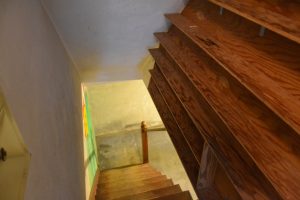 The original stairs to the basement were kind of an enigma to us. First, who thought nailing, screwing, and glueing (yes, all three) an extra large series of custom shelving to the wall of an already narrow stairwell would be a good idea? We already have to duck down near the bottom. Now we have to turn sideways up top. Following our first task of ripping up the carpet covering our main staircase, this became our second assignment. A few thousand fasteners later, an adult can pass through without hinderance.
The original stairs to the basement were kind of an enigma to us. First, who thought nailing, screwing, and glueing (yes, all three) an extra large series of custom shelving to the wall of an already narrow stairwell would be a good idea? We already have to duck down near the bottom. Now we have to turn sideways up top. Following our first task of ripping up the carpet covering our main staircase, this became our second assignment. A few thousand fasteners later, an adult can pass through without hinderance.
Next, it came as a shock to us that anyone would install a set of stairs without balusters. Perhaps the previous owners simply ran out of steam. Not only did it look unusual, the lack of support frightened our three year old nephew. Given that our workshop and power tools were located in the basement – two things he absolutely adores – this had to be fixed.
So, we set out to install new spindles. We picked up a set of 18 primed posts (2 per step below the wall) from Home Depot and set on our merry way. Almost immediately, we hit a snag. Do you see that plaster ceiling there? Yeah, its corner is a little too close (or too far?) from the steps. As is custom for corners, a metal bracket lined the edge, making it near impossible to attach anything to the ceiling anywhere nearby. If we wanted to do it right and include posts on every step – which, if you know us at all, we do – a new plan of attack would be needed. So, wood to the rescue! Bet you didn’t even notice that extra piece of pine between the posts and the ceiling.
With the pre-primed spindles in place, we sat back and took a look at our achievement. Good, not great. The treads (horizontals) and risers (verticals) had taken a beating over the last 60 some-odd years. As these stairs would receive very little use from the majority of our guests, no upgrades were truly necessary. Still, we wished they had received a little better care. A visit from our go-to flooring guy was going to cost too much, and besides, it was only the basement. A new coat of paint would do the trick. Benjamin Moore AF-530, also known as Lucerne, to be precise.
What a difference, wouldn’t you agree? Still, something was missing. We had installed posts on only one side of the staircase. There was an entire wall without any semblance of support at all. Especially up top, where the wooden banister faded into the ceiling of the floor below. So we put our heads together. What goes well with blue Lucerne? Why rope, of course! After a quick online search, we came across Knot & Rope Supply, a company dedicated to all things rope and rope accessories. As a bonus, everything’s made right here in the States! Utilizing K&R’s rope handrail hardware and ~15 feet of their manilla rope (we were afraid cotton would shrink and get dirty too quickly), the two of us hung a pretty baller rope support structure. To cap it off, Rich spent way too many hours tying it all together with a manrope knot at the bottom of the stairs. Which, of course, K&R now offer to do for you.

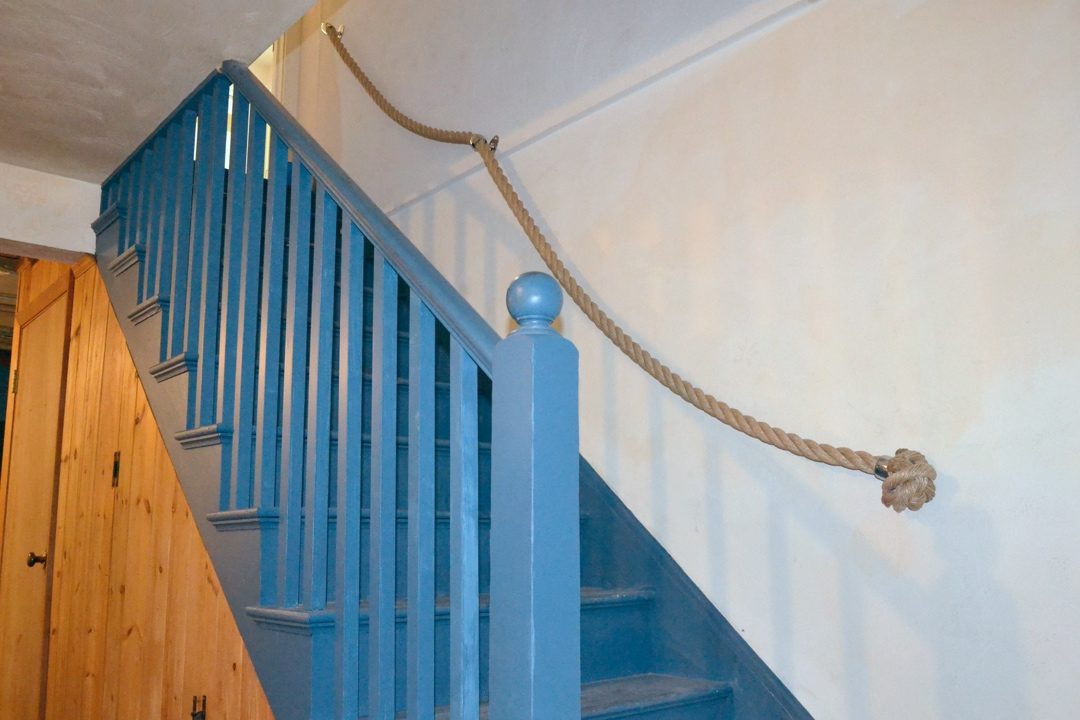
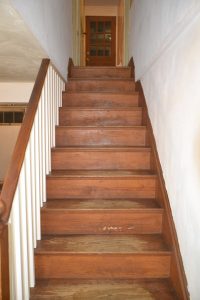
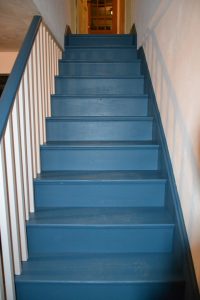
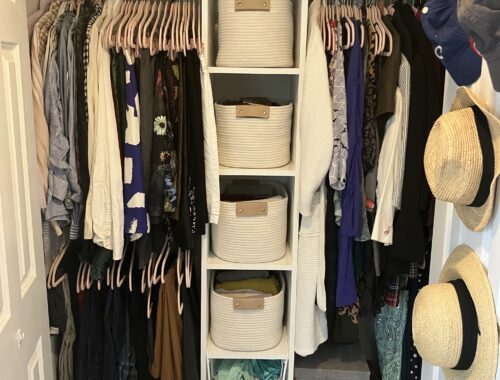
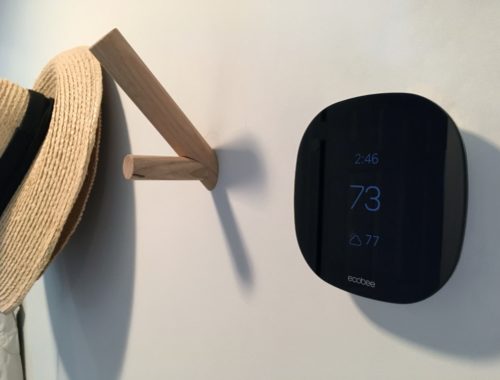

No Comments